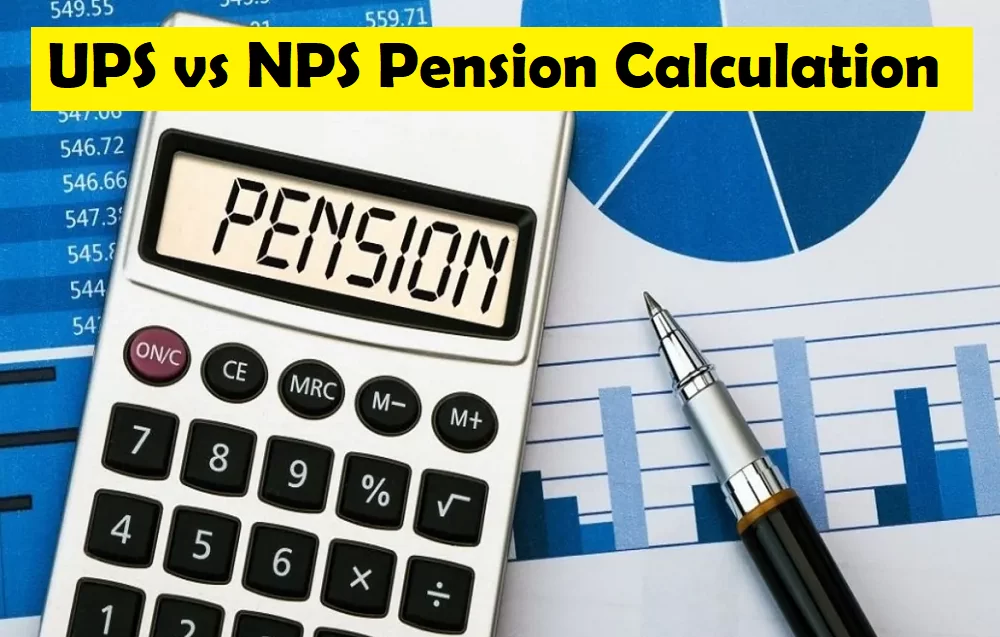The central government announced the Unified Pension Scheme on Saturday and on Tuesday Finance Minister Nirmala Sitharaman clarified that UPS is completely different, she expressed hope that most states will adopt it.
The central government made a big announcement last Saturday and announced the launch of the Unified Pension Scheme. Earlier it was being considered a way between NPS and OPS, but on Tuesday the Finance Minister clarified that it is different and better than NPS. Now people have a question in their mind that how is it so? Let us understand through calculation that if someone’s salary is Rs 50,000 per month, then how can one get more pension through UPS than NPS.
What is special in UPS?
To understand the whole calculation, first of all it is important to know what is special in the Unified Pension Scheme introduced by the government, which makes it different from NPS. So let us tell you that full pension will be available only when an employee has completed 25 years of service. The pension amount will be 50% of the average basic salary of the last 12 months. Apart from this, there is also a provision of minimum assured pension in UPS, under which a pension of at least Rs 10,000 per month will be confirmed after working for 10 years. In the family pension category in UPS, 60 percent of the pension will be given to the family on the death of the employee. Along with all these pensions, the benefit of dearness relief i.e. DR is also available.
This is the big difference between NPS-UPS
Talking about the big difference between the National Pension Scheme and Unified Pension Scheme, where in NPS the employee contributes 10 percent of his salary and the contribution given by the government is 14 percent, the total amount deposited in the NPS account is equal to 24 percent of the employee’s salary. On the other hand, in UPS, the employee contributes only 10 percent, but the contribution from the government is not 14 percent, but 18.5 percent. Overall, 28.5 percent of the salary will be deposited in the UPS account.
Also Read- UPS scheme: How many government employees will get the benefit of UPS? Details are here
Calculation of pension
Now let’s talk about how an employee can get more pension through UPS than NPS. So let’s understand this on the basis of a calculation.
On the basis of a salary of Rs 50,000 in NPS, the employee’s monthly contribution will be Rs 5,000 at the rate of 10 percent and 14 percent of this will be Rs 7,000 to the government. This will make the amount deposited in the NPS account Rs 12,000. National Pension Scheme is a scheme linked to the stock market, in which on making contribution, up to 60 percent of the amount is given as lump sum at the time of retirement and the remaining 40 percent amount is given as annuity. Let us assume that it gives 8% return and the deposit increases by 3% annually and the annuity gives 6% return, then in 35 years the total fund in NPS will be Rs 3,59,01,414. Out of this, annuity of around Rs 1.43 crore will have to be purchased. According to this, you will get Rs 77,000 as pension every month. Let us tell you that due to being market linked, the return can increase or decrease.
Pension will be made in this way in UPS
At the same time, the entire fund of the account in UPS will remain with the government. In return, the employee will be given 10% of the salary in lump sum on completion of every 6 months of service. There will be 70 half-years in a 35-year job. If we consider the average salary of Rs 50,000, then Rs 30,000 will be given for every half-year. In this way, on completion of 60 years, a total of Rs 21 lakh will be received in lump sum. However, this amount will also increase with the increase in salary. Apart from this, the pension will be 50 percent of the average basic salary of the last 12 months.
If we calculate 35 years of service, the starting salary is Rs 50,000 and suppose by the last 12 months of service your basic salary becomes Rs 1,00,000, then your pension amount will be Rs 50,000 per month and if 50% dearness relief (DR) is added to it as per the current rate, then the total pension becomes around Rs 100000. In such a situation, UPS will give more pension than NPS. It is better for those who retire soon, but they will not get the return through investment like NPS.
Related Articles:-
7 Points of Unified Pension Scheme (UPS), which every government employee should know; otherwise…
UPS scheme: How many government employees will get the benefit of UPS? Details are here
Unified pension scheme: These 5 things about UPS make it special from NPS, check here

